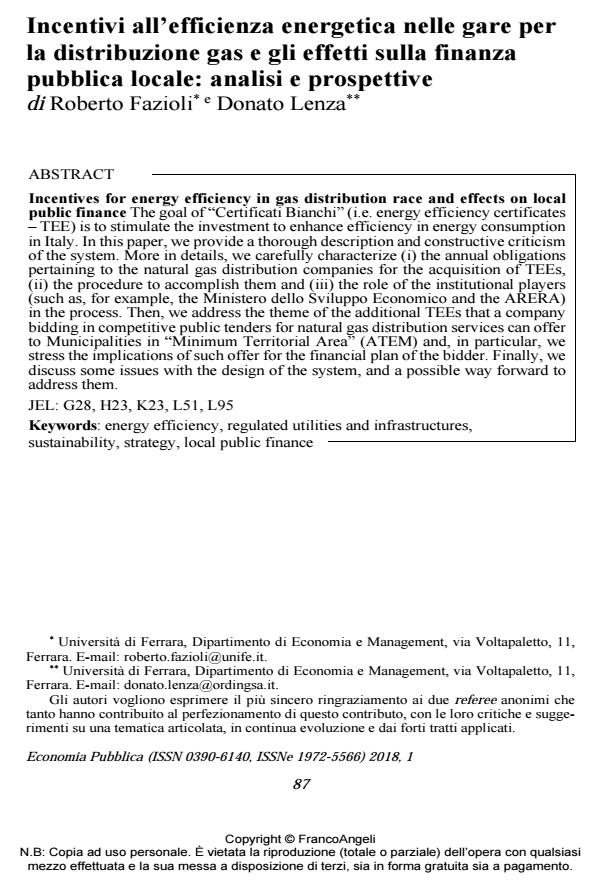Incentivi all’efficienza energetica nelle gare per la distribuzione gas e gli effetti sulla finanza pubblica locale: analisi e prospettive
Titolo Rivista ECONOMIA PUBBLICA
Autori/Curatori Roberto Fazioli, Donato Lenza
Anno di pubblicazione 2018 Fascicolo 2018/1
Lingua Italiano Numero pagine 36 P. 87-122 Dimensione file 340 KB
DOI 10.3280/EP2018-001004
Il DOI è il codice a barre della proprietà intellettuale: per saperne di più
clicca qui
Qui sotto puoi vedere in anteprima la prima pagina di questo articolo.
Se questo articolo ti interessa, lo puoi acquistare (e scaricare in formato pdf) seguendo le facili indicazioni per acquistare il download credit. Acquista Download Credits per scaricare questo Articolo in formato PDF

FrancoAngeli è membro della Publishers International Linking Association, Inc (PILA)associazione indipendente e non profit per facilitare (attraverso i servizi tecnologici implementati da CrossRef.org) l’accesso degli studiosi ai contenuti digitali nelle pubblicazioni professionali e scientifiche
The goal of "Certificati Bianchi" (i.e. energy efficiency certificates - TEE) is to stimulate the investment to enhance efficiency in energy consumption in Italy. In this paper, we provide a thorough description and constructive criticism of the system. More in details, we carefully characterize (i) the annual obligations pertaining to the natural gas distribution companies for the acquisition of TEEs, (ii) the procedure to accomplish them and (iii) the role of the institutional players (such as, for example, the Ministero dello Sviluppo Economico and the ARERA) in the process. Then, we address the theme of the additional TEEs that a company bidding in competitive public tenders for natural gas distribution services can offer to Municipalities in "Minimum Territorial Area" (ATEM) and, in particular, we stress the implications of such offer for the financial plan of the bidder. Finally, we discuss some issues with the design of the system, and a possible way forward to address them.
Parole chiave:Energy efficiency, regulated utilities and infrastructures, sustainability, strategy, local public finance
Jel codes:G28, H23, K23, L51, L95
Roberto Fazioli, Donato Lenza, Incentivi all’efficienza energetica nelle gare per la distribuzione gas e gli effetti sulla finanza pubblica locale: analisi e prospettive in "ECONOMIA PUBBLICA " 1/2018, pp 87-122, DOI: 10.3280/EP2018-001004